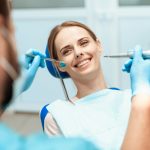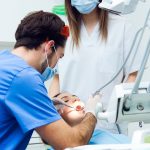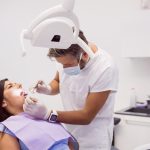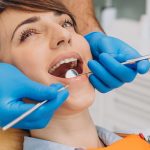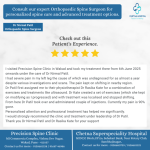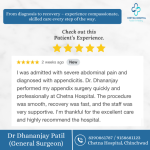Eyes are one of the most vital organs of the human body — they help us see, learn, and connect with the world around us. Yet, when it comes to eye health, myths and misinformation are everywhere. Many people believe that reading in dim light weakens the eyes or that using mobile phones leads to permanent vision loss. These misconceptions can lead to poor eye care habits and even delayed treatment for genuine eye diseases.
To help you understand the truth behind these beliefs, Dr. Rachana Tiwari, Ophthalmologist and Phaco-Refractive Surgeon at Chetna Hospital, Chinchwad, busts some of the most common myths about eye diseases.
🧿 Myth 1: Reading in Dim Light Damages Your Eyes
Fact:
Reading in low light does not cause permanent damage to your eyes. It may lead to temporary strain, dryness, or headaches, but once you rest your eyes, they return to normal. Proper lighting makes reading comfortable but doesn’t prevent vision loss.
🧿 Myth 2: Watching TV or Using Mobile Phones Ruins Eyesight
Fact:
Extended screen time can cause digital eye strain, dryness, and blurred vision, but it doesn’t cause permanent damage. Follow the 20-20-20 rule — every 20 minutes, look at something 20 feet away for 20 seconds — to relax your eyes and prevent fatigue.
🧿 Myth 3: Eye Drops Can Cure Cataracts
Fact:
Cataracts occur when the eye’s natural lens becomes cloudy. Currently, the only effective treatment is cataract surgery, where the cloudy lens is replaced with a clear artificial one. Eye drops cannot dissolve or remove cataracts.
🧿 Myth 4: Eye Exercises Can Replace Glasses
Fact:
Eye exercises may help improve focus and coordination but cannot correct refractive errors like myopia (nearsightedness), hyperopia (farsightedness), or astigmatism. Only glasses, contact lenses, or refractive surgery can provide clear vision.
🧿 Myth 5: Children Don’t Need Eye Check-ups
Fact:
Children may not always realize or communicate vision problems. Regular eye check-ups can detect early issues like lazy eye (amblyopia), squint, or refractive errors, which are easily treatable if diagnosed early.
🧿 Myth 6: Rubbing Eyes Is Harmless
Fact:
Rubbing your eyes can cause micro-scratches on the cornea, increase the risk of infection, and worsen conditions like keratoconus. Instead, rinse your eyes with clean water or use lubricating eye drops if you feel irritation.
🧿 Myth 7: Wearing Glasses Weakens the Eyes
Fact:
Glasses do not weaken your eyes. They simply correct your vision so that you can see clearly. If your power increases over time, it’s due to natural changes in your eyes, not because you wear glasses.
🧿 Myth 8: Eye Problems Occur Only in Old Age
Fact:
While aging increases the risk of cataracts, glaucoma, and macular degeneration, young adults and even children can suffer from eye problems. Regular eye exams are important at all ages.
🧿 Myth 9: Sunglasses Are Only for Sunny Days
Fact:
Harmful ultraviolet (UV) rays can affect your eyes even on cloudy days. Prolonged UV exposure can cause cataracts, corneal burns, and macular degeneration. Always wear UV-protected sunglasses outdoors.
🧿 Myth 10: Carrots Alone Can Improve Eyesight
Fact:
Carrots are rich in vitamin A, which supports eye health, but eating only carrots will not improve your vision. A balanced diet rich in leafy greens, citrus fruits, nuts, and fish ensures proper nutrients for eye health.
🧿 Myth 11: Eye Infections Heal Faster with Home Remedies
Fact:
Home remedies like rose water or milk can worsen infections. Eye infections should be evaluated by an ophthalmologist. Proper treatment with antibiotic or antiviral drops ensures faster healing and prevents complications.
🧿 Myth 12: Only Diabetics Need Eye Exams
Fact:
While diabetics are more prone to diabetic retinopathy, everyone should get regular eye exams. Eye diseases like glaucoma and macular degeneration often show no symptoms in early stages but can cause irreversible vision loss if untreated.
🧿 Myth 13: Crossed Eyes in Children Correct Themselves
Fact:
Squinting or crossed eyes in children do not always go away on their own. Early intervention is crucial. Eye exercises, glasses, or sometimes surgery can correct the condition if treated in time.
🧿 Myth 14: Nearsighted People Can’t Have Laser Surgery
Fact:
Modern laser procedures like LASIK and SMILE can correct nearsightedness, farsightedness, and astigmatism safely and effectively. A thorough pre-surgery evaluation determines if you’re a suitable candidate.
🧿 Myth 15: Eye Diseases Are Always Painful
Fact:
Many serious eye conditions, like glaucoma or diabetic retinopathy, are painless in early stages. Regular eye check-ups help detect such “silent” diseases before vision loss occurs.
🧿 Myth 16: Floaters Are Always a Sign of a Serious Problem
Fact:
Floaters — tiny spots or threads drifting in your vision — are common and mostly harmless. But if you suddenly notice a shower of floaters, flashes of light, or a shadow in your vision, seek immediate medical help as it may indicate a retinal problem.
🧿 Myth 17: Contact Lenses Are Unsafe for Long-Term Use
Fact:
When used properly, contact lenses are safe for daily or extended wear. Maintaining hygiene, following your doctor’s advice, and replacing lenses as recommended are key to healthy lens use.
🧿 Myth 18: Eye Surgery Is Risky and Painful
Fact:
Modern eye surgeries, such as cataract and LASIK, are painless, quick, and highly successful. With advanced laser technology, recovery is smooth and vision improves significantly within days.
🧿 Myth 19: Squinting Improves Eyesight
Fact:
Squinting slightly sharpens focus temporarily but indicates an underlying refractive error. It’s not a sign of strong eyesight. An eye examination and corrective lenses can solve the problem.
🧿 Myth 20: Eye Diseases Are Not Preventable
Fact:
Many eye diseases are preventable with simple measures — maintaining a balanced diet, protecting eyes from UV light, avoiding smoking, controlling diabetes, and going for routine eye check-ups.
👩⚕️ Expert Advice by Dr. Rachana Tiwari
Dr. Rachana Tiwari, a leading Eye Specialist in Chinchwad, emphasizes the importance of early detection and prevention. “Most eye diseases can be controlled or even prevented if diagnosed early. Ignoring small symptoms like blurred vision, eye pain, or dryness can lead to long-term problems,” she explains.
She advises everyone to:
- Get routine eye check-ups once a year
- Avoid rubbing eyes
- Maintain proper screen hygiene
- Wear UV-protected sunglasses outdoors
- Follow a nutritious diet
🏥 About Chetna Hospital, Chinchwad
Chetna Hospital offers comprehensive eye care services, including:
- Advanced cataract surgery
- Glaucoma management
- LASIK and refractive surgery
- Retina and cornea treatments
- Pediatric and diabetic eye check-ups
- OCT and retina imaging
- Advanced dry eye testing
With modern facilities and expert specialists, Chetna Hospital ensures accurate diagnosis and safe, effective treatment for every patient.
🌟 Conclusion
Your eyes deserve the best care — not myths. Believing in false information can delay treatment and harm your vision. Trust verified medical advice, protect your eyes from unnecessary strain, and schedule regular eye exams with qualified professionals.
If you are looking for an Eye Specialist in Chinchwad, visit Dr. Rachana Tiwari at Chetna Hospital, Chinchwad, for expert eye care and advanced treatments.
